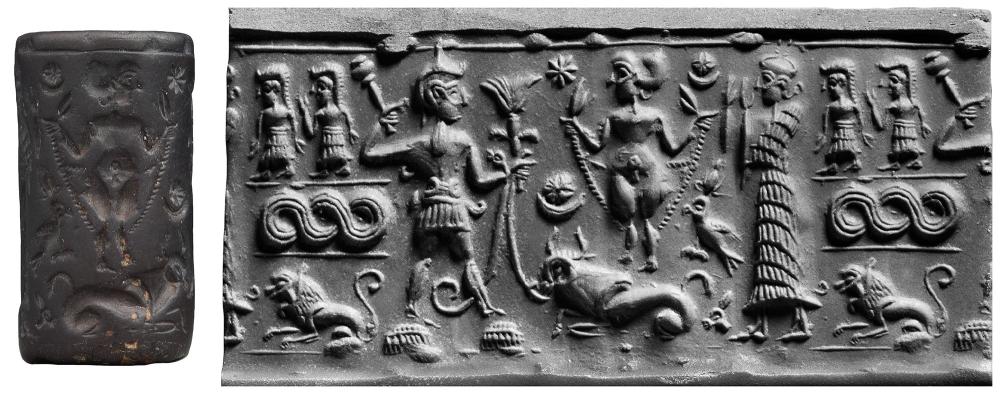
between 1650 B.C. and 1350 B.C.
limonite ;
Morgan Seal 967
Description
1 cylinder seal : limonite ; 25 x 13 mm
Provenance
Acquired by Pierpont Morgan sometime between 1885 and 1908.
Notes
"Indubitable renderings of the weather god are found in 967 and 968. In both these seals he is standing on mountains and brandishing a mace in one hand. In 967 he is shown holding a snake and a bull's rein in the other hand, like the god in 964, though here the snake is clearly depicted, while the third object in the same hand is a lotus blossom, not an ax. This blossom invites comparison with a relief from Ras Shamra in which the weather god holds a spear topped with a plant element, probably a transformed lightning symbol. ... In 967 he faces a nude goddess standing on a bull, like the female deity in 942 and 943. This representation, and a similar one in Brett 90, where, however, the nude goddess appears in a winged inclosure, suggest a connection between these two figures like that predicated in regard to the nude female and the weather god in Old Babylonian seals. ... 966 and 97 show the fastidious engraving that marks the height of Syrian glyptic."--Porada, CANES, p. 129
Summary
God with spiked helmet standing on two mountains, brandishing mace, and holding before him snake, lotus blossom and rein of kneeling bull on which nude goddess stands opening her veil -- Suppliant goddess -- Over shoulders of nude goddess, star, cross disk in crescent -- Above bull's head, second cross disk in crescent -- Above bull's tail, bird with Egyptian atef crown -- Below tail, animal head -- Terminal: two female figures, guilloche, sitting lion, one above other.
Catalog link
Classification
Department
